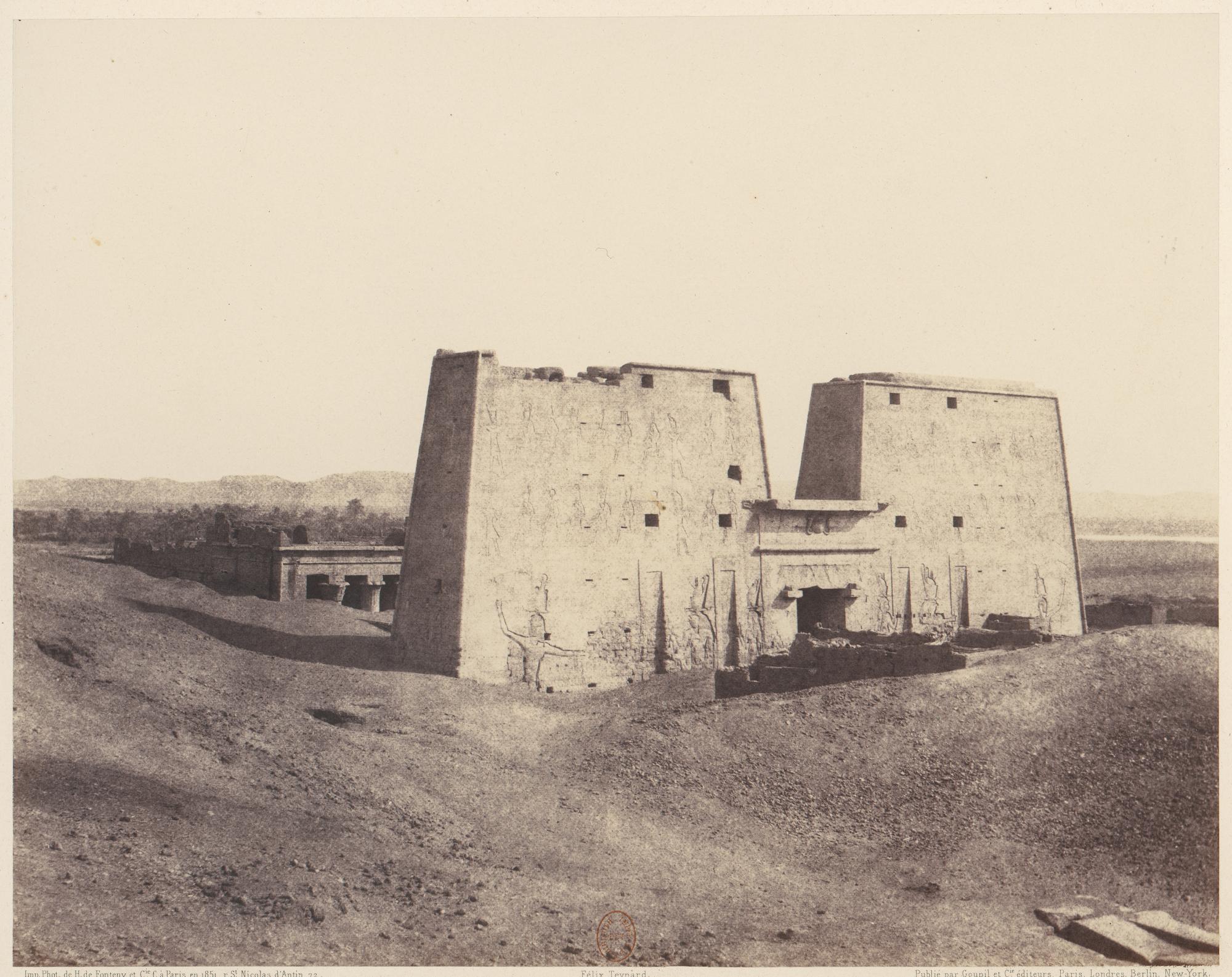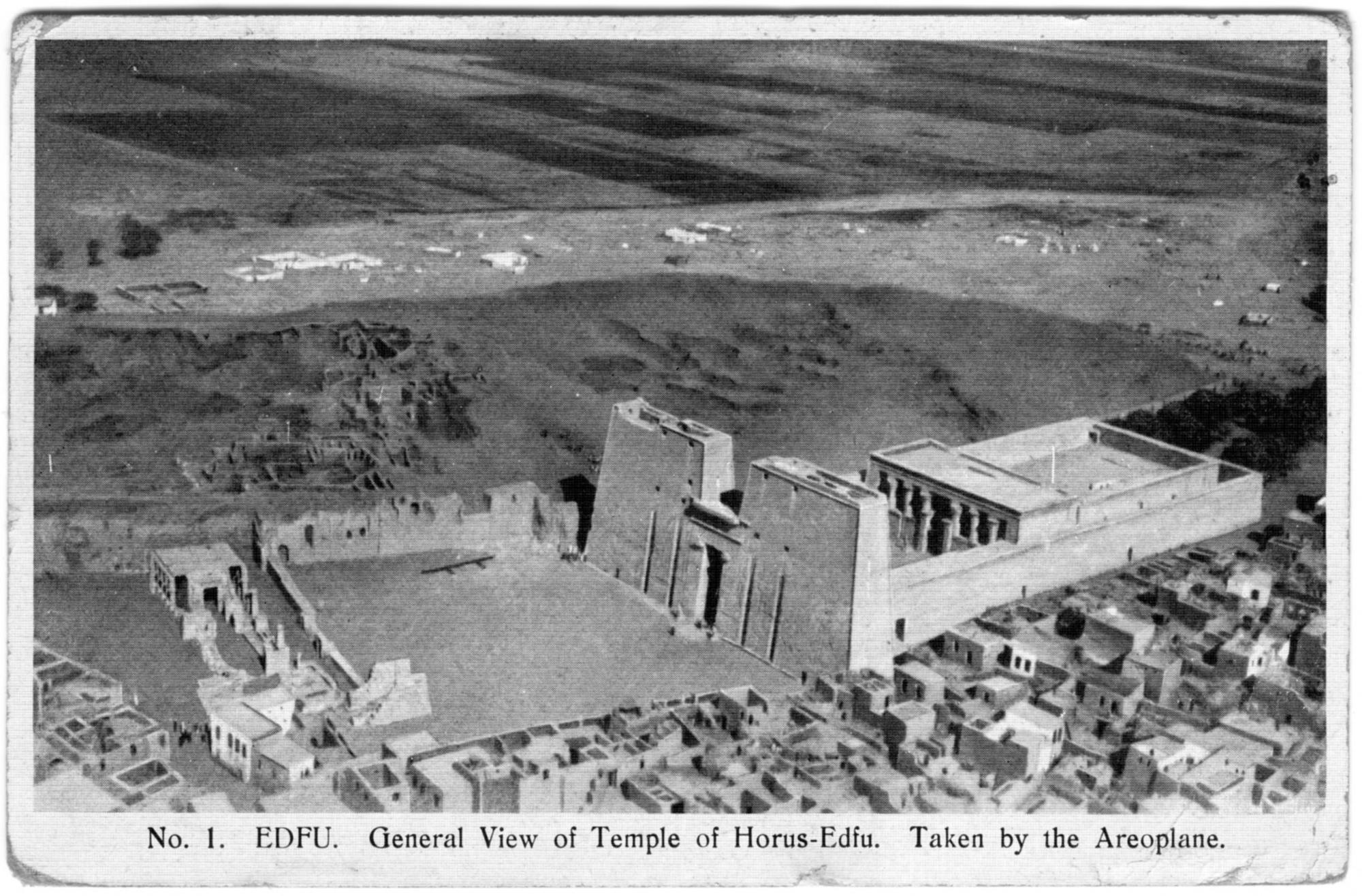
In the late 19th and early 20th centuries, it was common practice in Egypt to give permits to local farmers to extract the rich, organic soil of ancient archaeological sites in order to be used as fertilizers (sebakh). Tell Edfu did not escape this fate. While Auguste Mariette started clearing the Temple of Horus for the Antiquities Service around 1860, the ancient settlement area, was left to sebakkhin diggers. As it stands today, the tell is only a small portion of the ancient city. The rest of the tell has been destroyed or is inaccessible for excavation as it extends underneath the modern town east of the temple. Other parts of the site were further removed between 1903 and 1905 when Alexandre Barsanti, working for the Antiquities Service, cleared an area close to the temple in order to temporarily store the blocks of the collapsing western temple enclosure wall which needed consolidation.

From 1914, until the outbreak of World War II in 1939, Edfu became a concession of the Institut Français d’Archéologie Orientale (IFAO). The first seasons of excavations focused on finding Greek and Coptic papyri, and were thus limited to the uppermost levels of the tell. Henri Henne directed the mission from 1921 to 1924, while Octave Gueraud took over in 1928. From 1932 to 1933, Maurice Alliot continued in his predecessors’ footsteps while also starting to explore the Old Kingdom (Dynasty 3-6, ca. 2686-2200 BCE) mastaba tombs in the ancient cemetery of Edfu situated in along the base on the south-western side of the tell.
In 1937, Tell Edfu became a Franco-Polish excavation under the direction of Bernard Bruyère and Kazimierz Michalowski. The excavation focused on the upper portion of the tell, where the team uncovered remains of the Coptic, Roman, and Ptolemaic town. This Franco-Polish mission was also interested in exploring the ancient cemetery and started the first systematic excavations of the Old Kingdom (Dynasty 3-6, ca. 2686-2200 BCE) and Middle Kingdom (Dynasty 11-14, ca. 2055-1650 BCE) tombs. Work at the site was halted in 1939 with the outbreak of World War II.
It was not until 1975 and 1976 that work was continued under Manfried Bietak and Barry Kemp, who both conducted short surveys focusing on the earlier pharaonic settlement, never investigated by previous archaeological missions. Kemp was able to identify important settlement layers from the Old and Middle Kingdom (Dynasty 11-14, 2055-1650 BCE). In 2005, Nadine Moeller (Oriental Institute, University of Chicago) began the Tell Edfu Project, which sought to investigate these earlier remains. So far, the project has focused in three distinct areas of the ancient tell. Archaeological fieldwork has so far focused on
- excavating a large silo courtyard of the Dynasty 17 (New Kingdom, 1550-1069 BCE) overlying an older a Governor’s residence from the Middle Kingdom (Dynasty 11-14, 2055-1650 BCE) in Zone 1
- the earliest Old Kingdom (Dynasty 3-8, 2686-2160 BCE) occupation on the easternmost part of the tell (Zone 2) has been excavated and fieldwork is still ongoing
- the investigation of the various town walls of the settlement inparticular along the northern limits of the site (Zone 3)
- an domestic elite settlement quarter dating to the early 18th Dynasty (ca. 1540-1490 BCE) since 2018 in (Zone 1)

